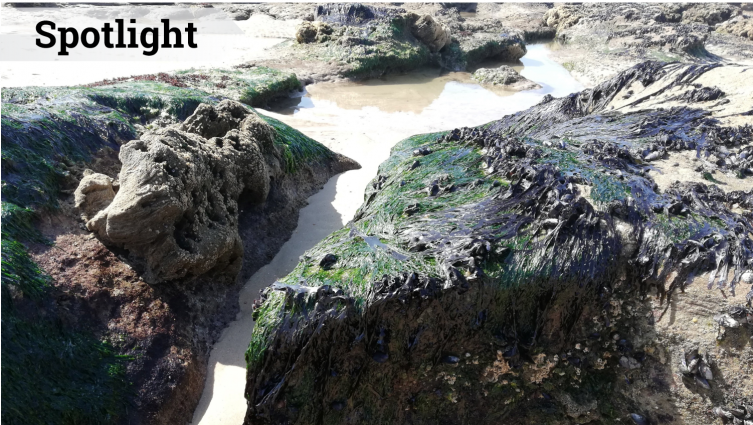Researchers discovered that some red algae have genomes of different sizes within the same individual
Our researchers Elena Varela-Álvarez and Ester Serrão together with the researchers João Loureiro and Mariana Castro (FLOWer Lab of the Centre for Functional Ecology, University of Coimbra) and Patrick Meirmans (University of Amsterdam) have found that species of the red algal genus Porphyra are chimeras of different genome types and different genome sizes in different cells of each individual alga. The results were published recently in the journal Frontiers in Marine Science.
The genomes in these species
Before we explain the importance of this study, it is important to understand what genome is. The genome is all genetic material of an organism in its DNA. In turn, genome size refers to the total amount of DNA contained in each cell of an organism or species.
Normally, it is expected that the amount of DNA per cell is relatively constant across an individual. However, some species in nature have individuals with genomic heterogeneity or cells with different genome sizes. In this study, the researchers focused on one of those extraordinary species, the red algae Porphyra known to those who love sushi or other Japanese cuisines as Nori, where individuals are composed of genetically different cells lines with different genome sizes.
Researchers have discovered that Porphyra red algae species are composed of genomes with different sizes in the same individual
Species of the genus Porphyra are important marine products. For over 100 years, these seaweed species have been extensively cultivated in Japan and other countries. In 1940, Drew revolutionized the production of these valuable species by discovering their life cycle.
In this study, researchers discovered that the red algal genus Porphyra are chimeras formed by cells with different genome types (one euploid genome with a complete set of chromosomes and another aneuploid genome with fewer or extra chromosomes) distributed spatially along the blade forming sectors or mosaics.
Results may have important implications on the understanding of algal biology
This study represents not only an advance in the knowledge of the genetic diversity of these economically important algae but also an advancement in the understanding the biology and evolution of red algal taxa. The researchers believe that the presence of these genome types in the chimeric thalli plays a role in shaping the genetic diversity of these taxa.
These results may have important implications to understand algal biology and raise further questions on concepts about what constitutes an individual.
You can read the full article HERE.


